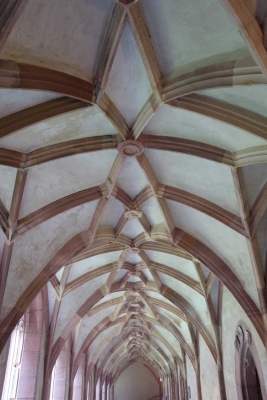The project "Monasteries in the High Middle Ages. Laboratories of Innovation for European Designs of Life and Models of Order" analyses the monastic world of the Middle Ages as a precursor of Modernity. Especially between the 11th and 13th centuries, medieval monasteries and religious communities developed new and innovative ways of shaping life. In doing so, they fulfilled an important mediating function between pious seclusion from the world and the multi-layered dynamics of medieval society. Religion – politics – economy: in all these areas, monasteries created or shaped sustainable models for describing and mastering societal changes.

Two closely linked research centres at the Heidelberg Academy of Sciences and Humanities and the Saxon Academy of Sciences and Humanities in Leipzig (research centre in Dresden) pursue these topics.
The Heidelberg research centre examines texts by authors from the 12th and 13th centuries which drafted fundamental models of order and thus had a targeted impact on life outside the monastery. These works were written in the context of monasteries or religious communities such as the canons regular or mendicant orders. In them, the authors collected theological knowledge and oral narrative materials available to them at the time and brought it into a new, application-oriented order. In this way, they created forward-looking visions of a "better" world. The aim of our work is to compile new editions of central sources of the religious life of the Middle Ages as well as their content-related evaluation taking cultural studies and new methodological questions into account.
The focus of the research centre in Dresden is the monastic reform of the individual and the community with internal monastic orders and normative texts. The focus is on texts from the 11th to 13th centuries, in which the cultural interpretative power of the monasteries becomes programmatically tangible in a distinctive way: Exhortations and didactic treatises, monastic or other religious rules and statutes as well as their commentaries, which determined the legal order of the communities.

